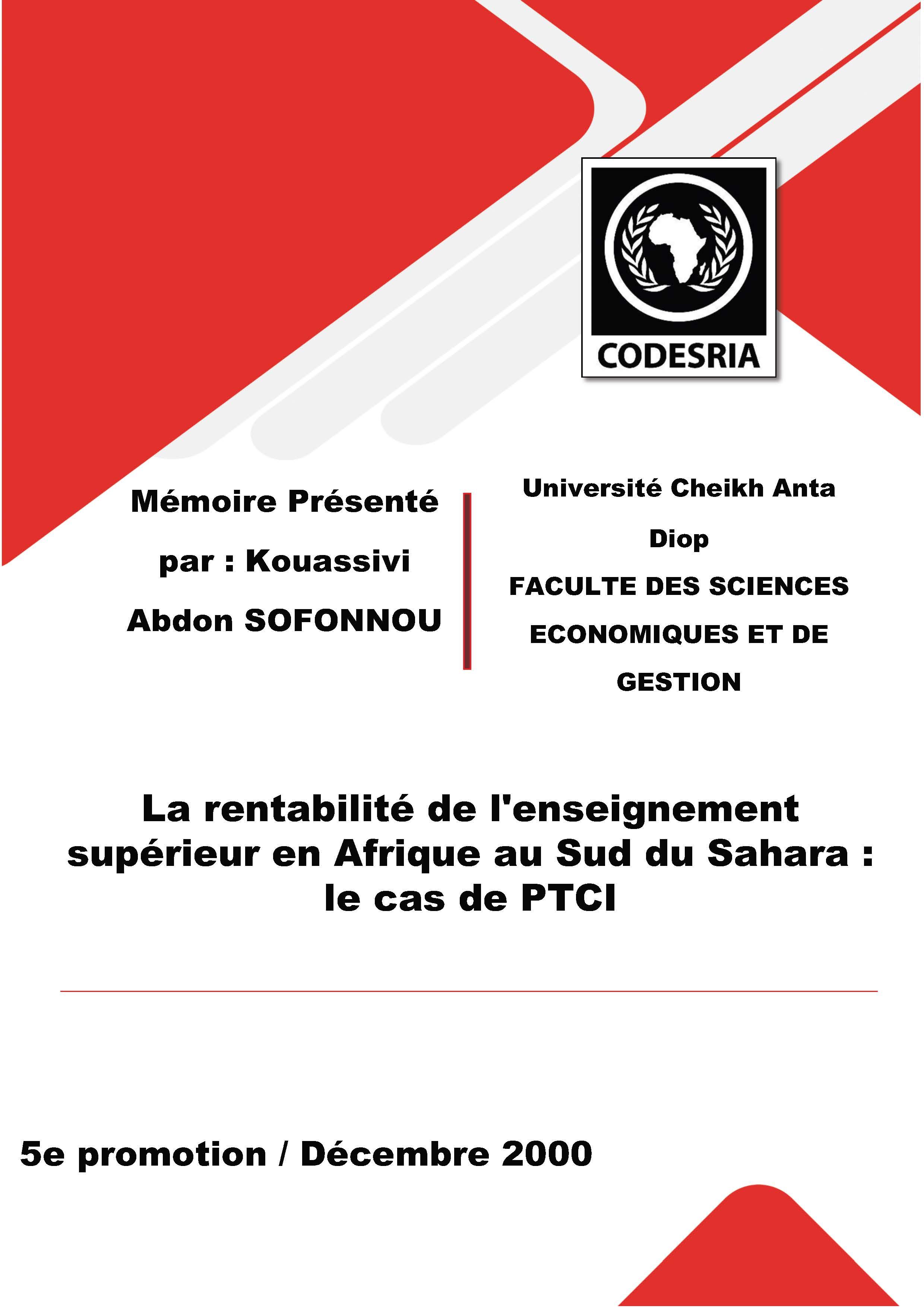La rentabilité de l'enseignement supérieur en Afrique au Sud du Sahara : le cas de PTCI
Mots-clés :
Enseignement supérieur, rentabilité, rendement de l'éducation, Afrique au sud du Sahara, Dakar, SénégalSynopsis
The main problem of African universities resides in the sharp decline of their
teaching performance due to the erosion of their resources, and increased
enrollment. Bad performance of the national economies, deficient national policies,
inadequate internai management and university disturbances, are many more factors ·
which contributed to the decline of the situation. ln view of the stakes that education
constitutes, governments of sub-saharan countries ha\te made important sacrifices
for the development of their educational systems, by allocating of their of share ·
important GDP. Despite these · efforts, the results have always been below
expectations. Tertiary education which enjoyed the greater share of thesé resources
was characterized by its inefficiency and excessively high unit cost .
The implementation of SAP has had as consequence, in short and medium tem, the
drop of public expenditures. Education expenditures have been unbelievably more
elastic than the disbursements allocated to other sectors. Tertiary education
remains therefore the "disabled" of African educational systems. The development of
education, specially in African universities has become an illusion for several
reasons, manily :
• The development of a paradox between, on one hand, the continous increase of
social demand of education, and on the other hand, the budgetary cuts aimed at
the education sector
• The difficult adequation between the logic of economic stabilisation policies and
that of long term profitability that underlines investment in education
The reframing of the problematic in issues of mobilization and financing of the
sector becomes therefore unavoidable so as to create new strategies to face future
challenges.
A new vision of universities will give birth to the inter-university post-graduate
program in economic sciences for Sub-Saharan Africa. A PTCI is presented today as
solution to the crisis of tertiary education of African countries. Even though, the
internai rate of return of the program is encourgeing, the external efficiency-needs to
be demonstrated. this is the main objective of this search.
Téléchargements
Références
AKIN J S et GARFINKEL, (1977), "School expenditures and the economic return to schooling", Journal ofhuman ressources, vol. 12, no. 4, p. 460-481.
BAUMANN E. (1996) : "Les jeunes économistes de Dakar à la recherche de nouvelles rentes". Rapport intermédiaire, 2 vol., 28 et 78 p. Paris, Université Paris 1 - Sorbonne, pp. 2-18.
BAUMANN E. (1997): "Ajustement structurel : le marché de l'emploi comme indicateur des coûts sociaux"., le journal de l'économie (Dakar), n° 66, 8 avril, pp. 1 et 7.
BAUMANN E. (1997): "Etre diplômé d'université en 1997 :les mutations du marché de l'emploi". Le journal de l'Economie (Dakar), n° 66, 8 avril, pp. 4 et 9.
BECKER. G.S. (1993): "Human Capital: A theorical and empirical analysis, with special reference to education" The university of Chicago. Press, Chicago and London, third edition.
BEEDEEANUM C, NEDJOMO C (1999): "Politiques, Procédures et Stratégies d'allocation des ressources à l'éducation en Afrique Subsaharienne".
BEHRMAN ET BIRDSALL (1983, 1984, 1987), "The quality of schooling: quantity alone is misleading", American Economie Review, vol. 73, no. 5, p. 928-946.
BECKER G (1964) : Human capital: a theoretical and empirical analysis with special reference to education. New york NBER et Columbia univresity press.
BERGER M. C, (1983), "Changes in labor force composition and male earnings: a production approach", Journal of Human Ressources, vol. 17, no. 2, p. 177-196.
BISHOP J. H, (1989), "ls the test score decline responsible for the productivity growth decline?" American Economie Review, vol. 79, no. 1, p. 178-197.
CONNEL Y C, (1986), "A framework for analyzing the impact of cohort size on education and labor earning", Journal of Human Ressources, vol. 21, no. 4, p. 543-562.
DIAGNE. A, DAFE G. (1997) : Rendement interne et Coût d'un diplôme à l'UCAD. CREA/ FASEG / UCAD.






